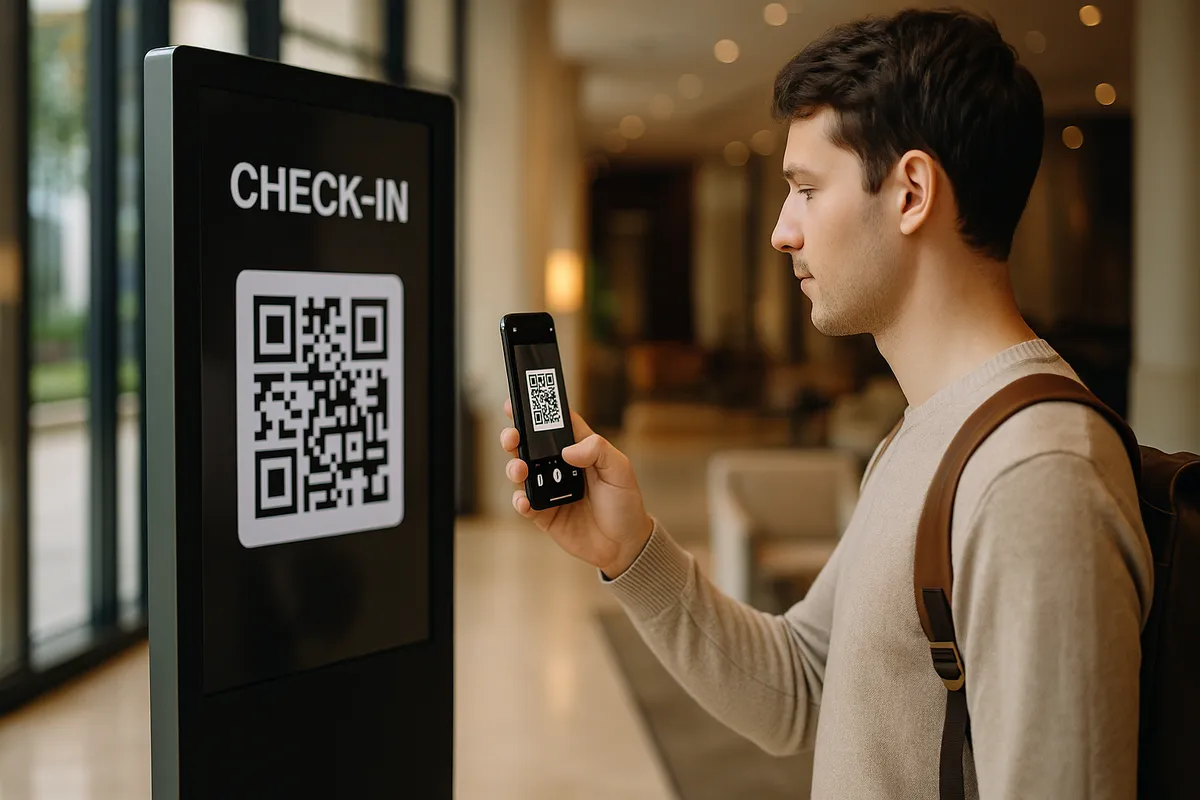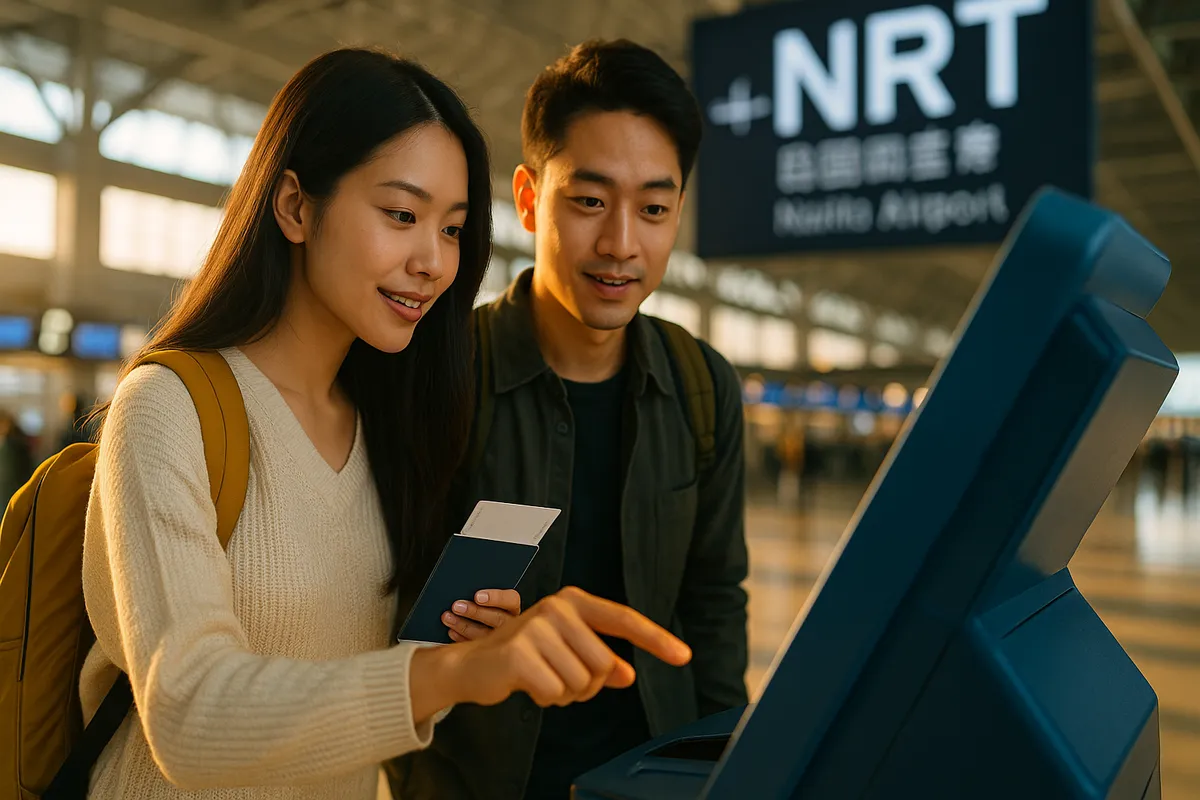Instructions for checking in with QR code at the hotel without a receptionist
- Friday, Jun 06, 2025, 15:11 (GMT+7)
Instructions for checking in with QR code at the hotel without a receptionist
After a long journey, no one wants to stand in line, fill out paperwork, or fumble through luggage to find ID cards. As technology continues to transform every step of the travel experience, checking in with a QR code at hotels is becoming a new standard, especially among younger travelers who value speed, convenience, and security.
Real-world data from hotels in Hanoi, Da Nang, Ho Chi Minh City, and tourist destinations like Phu Quoc, Sa Pa, and Hoi An shows a growing preference for contactless check-in. Among the options available, QR code check-in stands out for its simplicity, fast processing, and compatibility with both large hotel chains and small boutique properties.
The mechanics of QR code check-in are straightforward. After booking through an OTA or the hotel’s website, guests receive a unique QR code that contains reservation details, travel dates, and sometimes even a digital room key. Upon arrival, scanning the QR code at the front desk or self-check-in kiosk allows the system to instantly verify guest identity, match it with the reservation, and activate related services. When systems are well-optimized, the entire process can take as little as 10 to 20 seconds.
But speed is only part of the equation. Accuracy and guest experience are equally critical. Many hotels in Vietnam still use QR code check-in at a basic level, requiring staff intervention after the code is scanned. In contrast, more advanced implementations allow guests to skip the front desk entirely, unlock their room via smartphone, and receive automated instructions without speaking to a single employee.
One important insight into traveler behavior reveals that younger guests dislike complicated procedures. They want a “one-touch” experience, from booking to check-in. That’s why hotels offering their own apps or integrating QR codes into Apple Wallet or Google Wallet tend to leave a lasting impression. Some properties have even installed multilingual self-check-in devices in the lobby, enhancing usability for international travelers.
A common issue is the system failing to read the QR code due to weak internet, device errors, or synchronization problems between booking platforms and hotel databases. To avoid such situations, travelers should save the QR code as an image rather than relying on a live link. It’s also wise to arrive during standard hours when technical support is readily available in case assistance is needed.
For hotels, adopting QR code check-in requires more than just a scanner. The system must be integrated with a reliable property management system (PMS), ensure data security, and log access for safety purposes. Some hotels go further by embedding health declarations, digital signatures, and payment processing within the QR workflow, which streamlines operations and reduces staff load.
Despite its benefits, many guests don’t fully leverage QR code features. A helpful tip: after scanning the code, double-check displayed details like room number, stay duration, and included services to avoid mix-ups. If the hotel offers a guest management app, install it right away. It may provide exclusive discounts, housekeeping schedules, in-house promotions, or live updates on events.
A lesser-known trick used by some hotels is activating the QR check-in only when guests are physically near the property. This prevents no-shows or last-minute cancellations. If your code doesn’t activate right away, make sure you are within range and have your device’s location services enabled.
Real-life experiences in Da Lat reveal how homestays are using QR code check-in alongside smart locks, allowing guests to access rooms without staff interaction. Codes are sent in advance, and guests can let themselves in at any hour. While convenient, issues arise when phones run out of battery or guests struggle with the tech. Always carry a portable charger and request detailed instructions ahead of time.
Security is another key concern. QR codes store sensitive personal information, so avoid posting screenshots online during your stay. Modern systems encrypt QR codes, assign expiration times, or use an added PIN layer for extra protection.
Language barriers can make QR check-in daunting for international guests. Hotels can mitigate this by sending short video tutorials in popular languages or offering multi-language chatbot support when guests scan the code. These small touches go a long way in creating a seamless and welcoming experience.
QR code check-in is just the beginning of a much larger trend toward automation in hospitality. With just a smartphone, travelers can now control nearly every aspect of their hotel experience, checking availability, booking services, making payments, and even rating their stay after checkout.
To truly make the most of QR code check-in, understanding how the system works is essential. Know what to prepare, what to do if something goes wrong, and how to maximize convenience. When used correctly, QR code check-in not only saves time but also gives travelers more control, privacy, and a smarter way to enjoy their journey.

 CHECKIN.VN
CHECKIN.VN








Share on